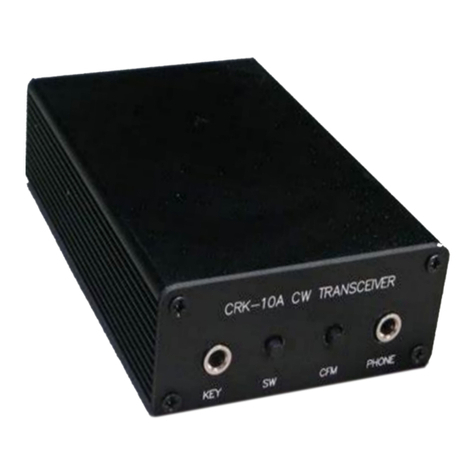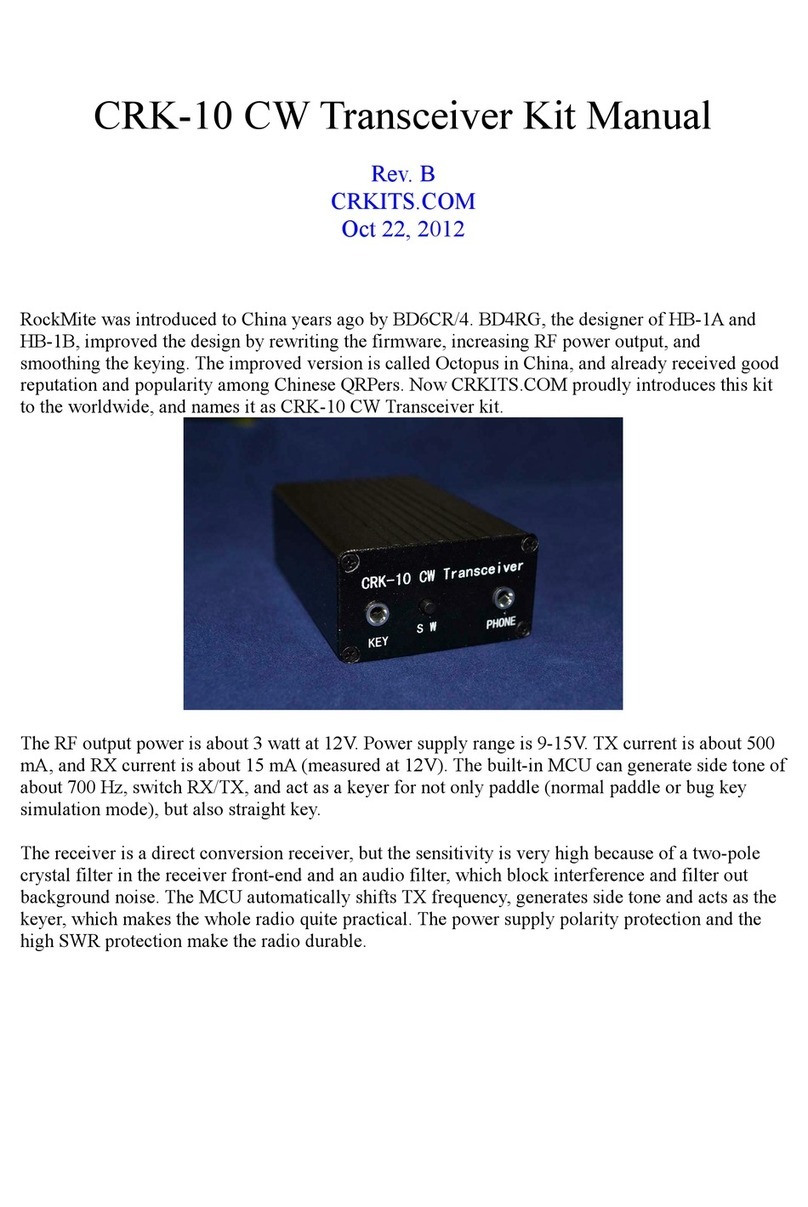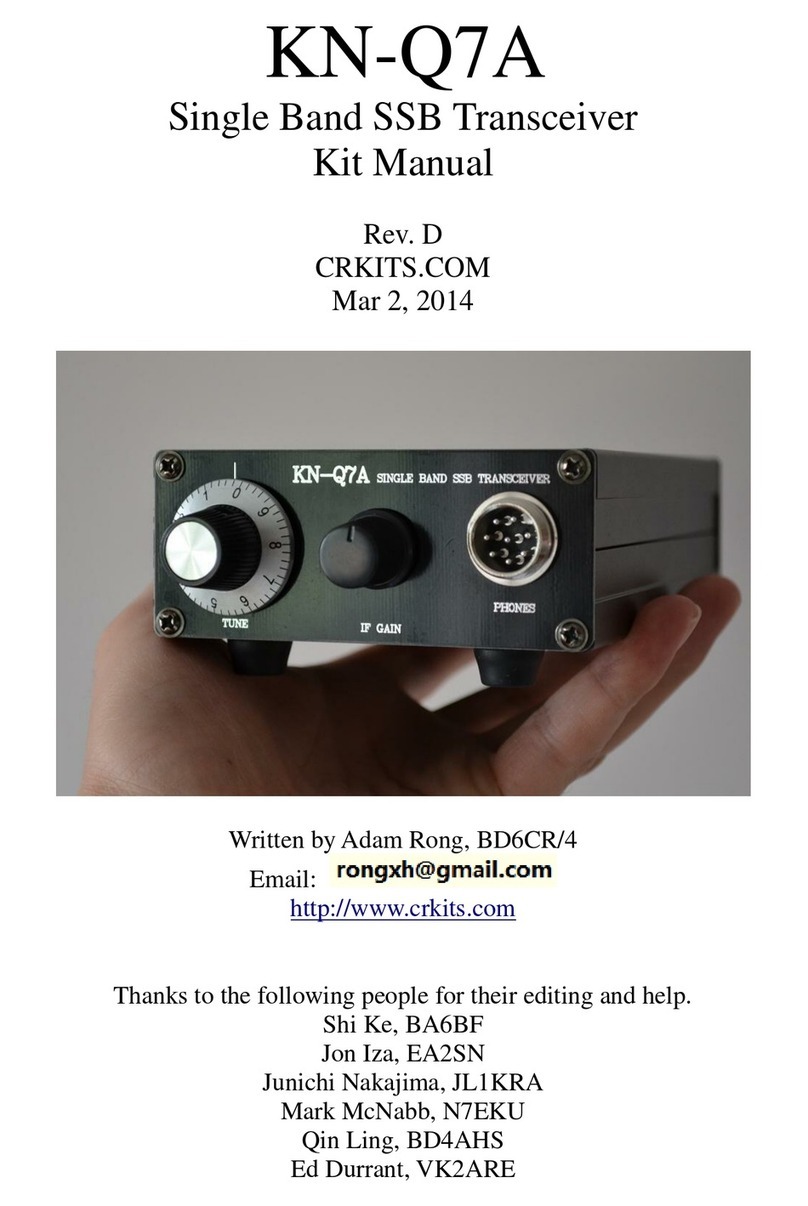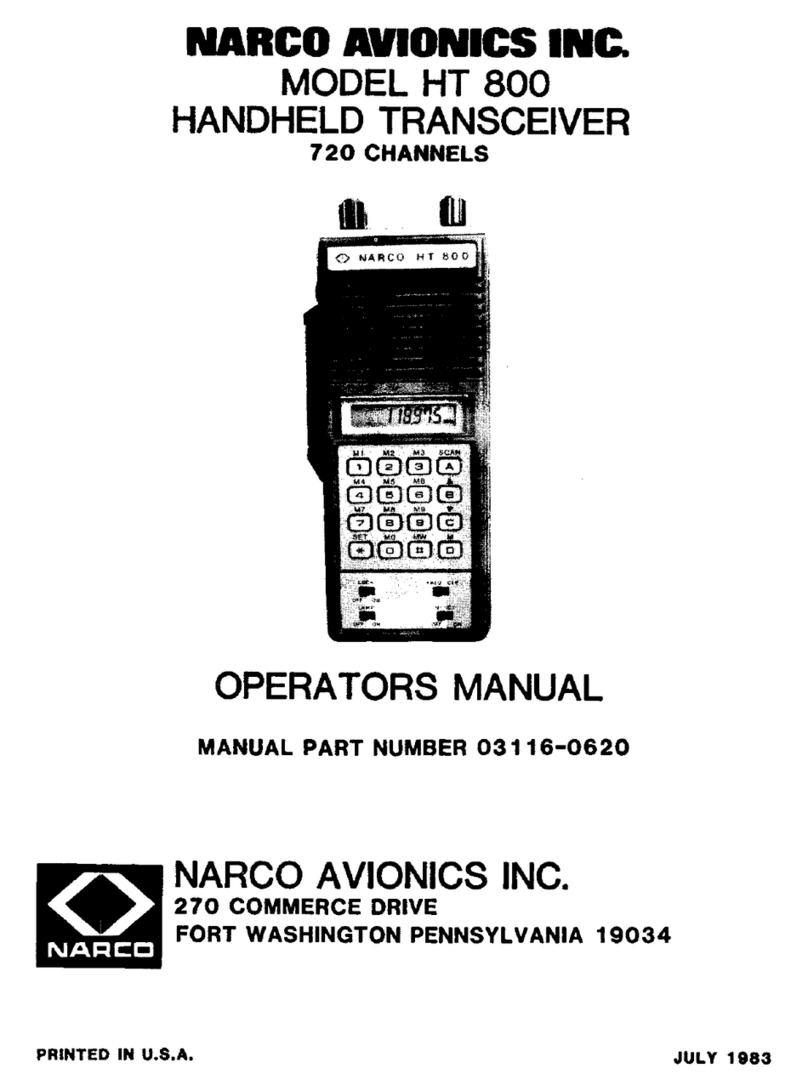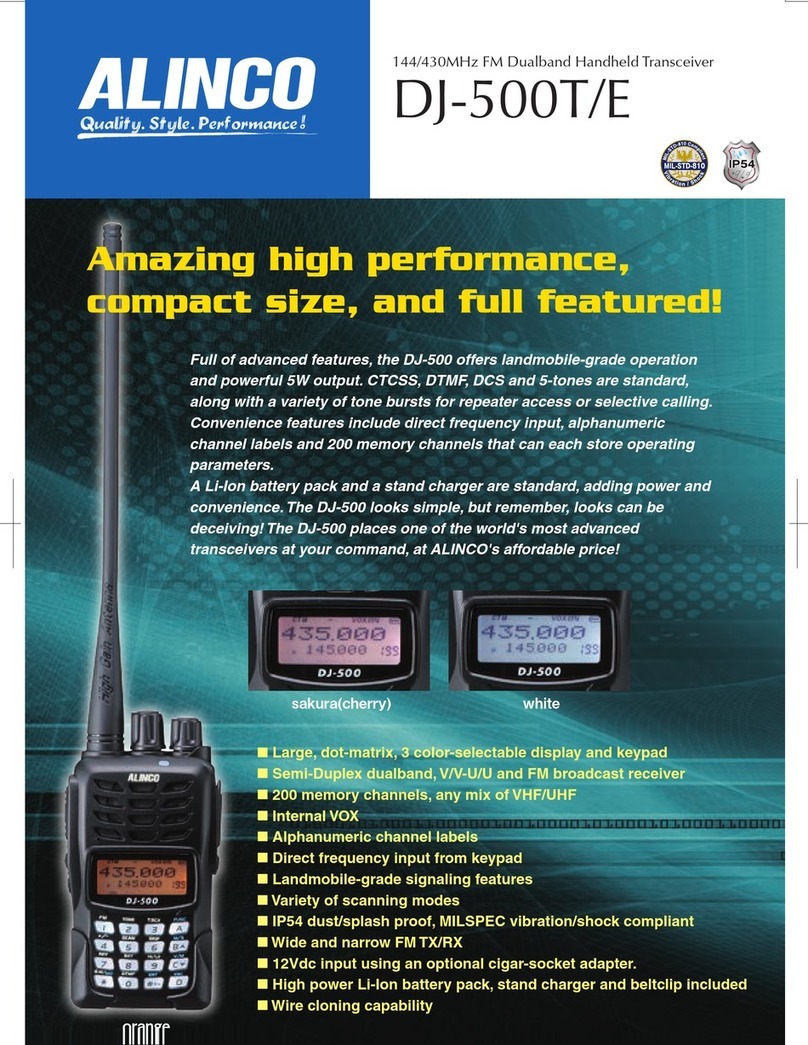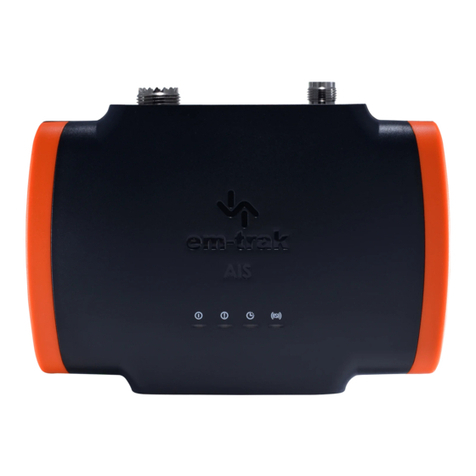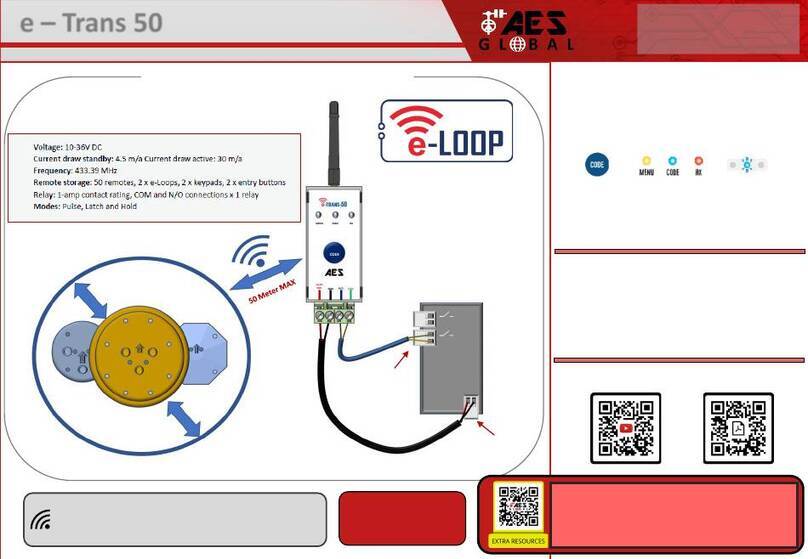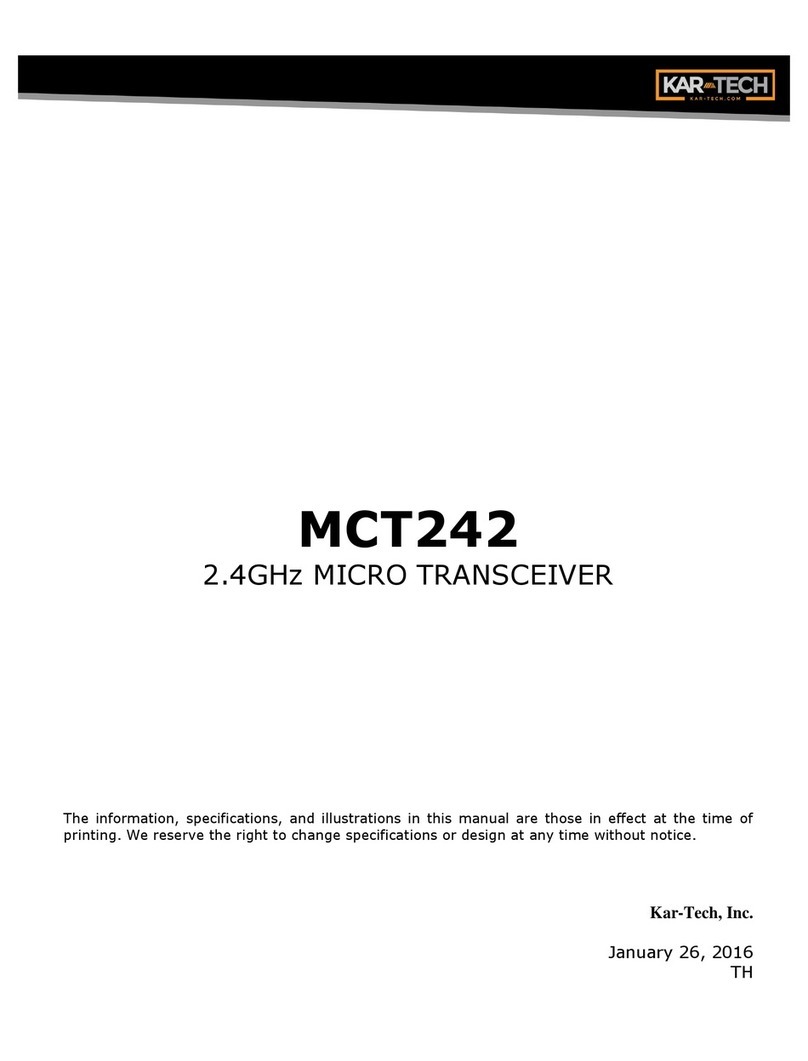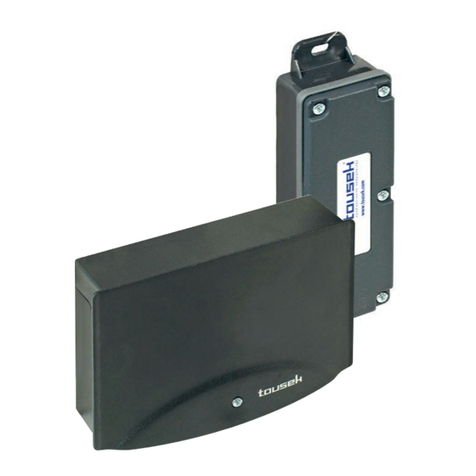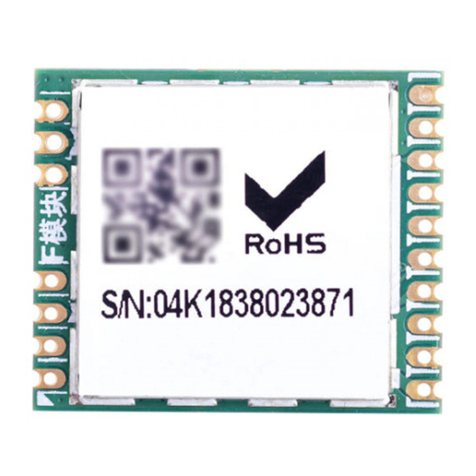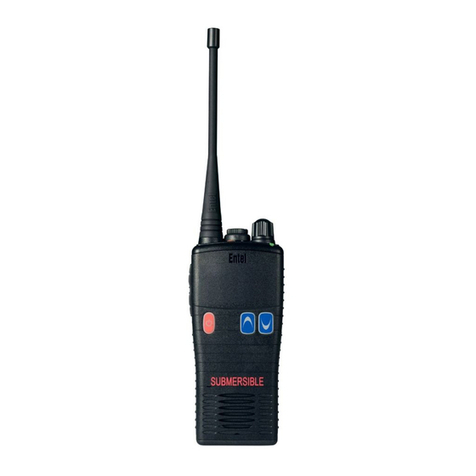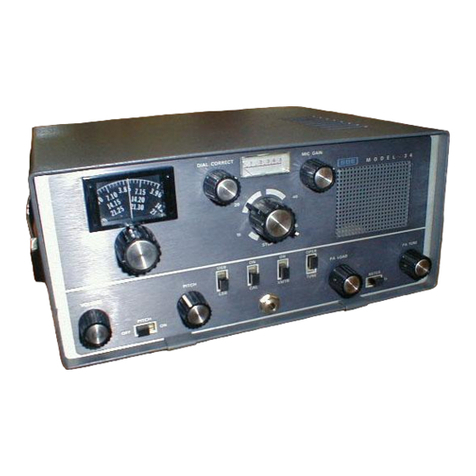CRKITS CS Series User manual

1
CS Series SSB Transceiver
Single Band SSB Transceiver Kit Manual
Rev. Preliminary Release –CRKITS.COM
April 8, 2017 –Preliminary Release
Original written by Adam Rong, BD6CR/4 Modified by Larry Lovell, N7RGW
Email: http://www.crkits.com
Thanks to the following people for their editing and help.
Shi Ke, BA6BF
Jon Iza, EA2SN
Junichi Nakajima, JL1KRA
Mark McNabb, N7EKU
Larry Lovell, N7RGW
Qin Ling, BD4AHS
Ed Durrant, VK2ARE
Revision History
Modified from KN-Q7A- Mar 4, 2014: Rev. D, rewritten for PCB V2.2 and 20m
version
1 May 2017 –Rev. A CS-Series

2
THANK YOU!
Thank you for purchasing your CS-SERIES Single Band SSB Transceiver Kit. The
kit was designed by BA6BF, and is now supplied by CRKITS.COM and its
worldwide distributors. The CS-SERIES kit is an ideal candidate for field
operation, back pack and emergency use.
In this revision of manual, we have rewritten for PCB CS-Series. 40M and 20 M
version will be also covered.
Specifications
Dimension: 153 mm x 97 mm x 40 mm, not including protruding features
Weight: approximately 12 oz. or 340 g.
Power Supply: 12~13.8 V, 3 A
Current consumption: about 70 mA in RX and about 2 A in TX @ 13.8 V
RF output: up to 10 W PEP @ 13.8 V (5 W PEP for the 20m version)
Spur suppression: better than -43 dBc
Sensitivity: better than 0.5 μV at 10 dB SNR
IF filter: 6 pole crystal ladder filter + 1 pole post IF amplifier crystal filter
IF frequency: 8.467 MHz
Frequency tuning range: 7.000~7.300 MHz or 14.000~14.350 MHz
Connectors:
oSpeaker output: 3.5 mm connector, mono output
oMicrophone input: 8-pin, can be configured to be compatible with
electret microphones or speaker microphones
oDC IN connector: Type 2.1 mm center positive
oAntenna connector: BNC type
Controls:
oIF Gain Control: act as volume control
oTune Control
Disclaimer
We offer the kit as is and do not guarantee the assembled kit by yourself can meet
your local regulatory requirements, including safety, RF, environmental or others.
As some parts used in the kit are obsolete, we cannot guarantee that all the
components in the kit are brand new, but we bear the responsibility of providing
them as good as possible.
Tools Preparation
The tools needed for the kit building are solder iron, solder sucker, clipper,
tweezers, pliers, screw drivers including Philips and slotted, and a multi-meter of

3
digital or analog type. Besides, you will need an electric drill and a 3 mm drill bit,
a 50 Ω, 20 W or higher power dummy load, an HF band SWR/Power meter, a 13.8
V/ 3 A power supply, a personal computer running Windows, an amateur radio
transceiver with a general coverage receiver and calibrated frequency display, and
other ancillary instruments. It will be nice if you have access to a frequency
counter, an audio signal generator, a RF signal generator, an oscilloscope and a
spectrum analyzer, but they are not absolutely required.
Parts Inventory
Open the package and read the one-page quick guide thoroughly. Also, some
volunteers have translated some manuals for you. To download your local
language documents, you can search the CHINA_QRP group file section on Yahoo
or go to the document archive section of http://www.crkits.com/. There you will
find a list of all documents (Thanks EA2SN for Spanish translations and JL1KRA
for Japanese translations).
You need to download the complete part list and do the parts inventory carefully.
40 m and 20 m version: http://crkits.com/ cspartlist.pdf
We have put resistors, trimmers, potentiometers and 104 capacitors into one plastic
bag so it will make your work much easier. You may find some extra parts, and it
is fine to keep them as backup.
It is okay to discard the original metal front panel, rear panel and the original 8x
panel screws now, because they have replacements in the kit. If you find problems
or missing parts, please contact your seller directly.
We offer several frequency ranges to meet different requirements (this list is
subject to change without notice):
7.000 MHz to 7.300 MHz for 40 meters
14.000 MHz to 14.350 MHz for 20 meters
Board Assembly
We will do it step by step, finishing one part of assembly at a time, and testing it to
ensure final success. We will provide partial schematic in each step to help you
understand the theory of operation, and make sure you install all the parts required
to do the final testing of the block.
However, the partial schematic might not contain all the parts you should install in
each step, so don't get confused when you are told to install a part not shown on the

4
schematic. Note that PCB version is subject to change without prior notice and it
may look slightly different from yours.
A. Preset this trimmer fully counterclockwise before you apply power supply.
When you adjust the bias voltage for the final PA, turn it clockwise very
very slowly, or the final PA is easily damaged.
NOTE: With this initial revision of the Assembly Manual, it is
recommended that you first begin with the assembly of the Digital
Sandwich: See: Detailed manual with photos located at
http://www.crkits.com/

5
Step 0: Sandwich Digital VFO
Let's start with the Sandwich Digital VFO. It is an Arduino and Silicon-Labs si5351a
based open-source design by CRKITS.COM to offer stable and wider range
frequency coverage. A dual-color LED offers frequency reading capability. It has
three outputs: One for VFO, another for BFO and the last one for crystal
calibration.
Unlike KN-Q7A, CS-series uses common 8.467 MHz IF, so the IF settings will be
different.

6
The table below shows the CS-series setting based on the sketches for CS-40, CS-
20 and later on available bands.
JP10
80-meter
40-meter
20-meter
OPEN
band high limit =
3800 kHz
default frequency =
3700 kHz
BFO = around 8467.2
kHz
band high limit =
7200 kHz
default frequency =
7100 kHz
BFO = around 8467.2
kHz
band high limit = 14350
kHz
default frequency =
14300 kHz
BFO = around 8467.2
kHz
SHORT
band high limit =
3900 kHz
default frequency =
3700 kHz
BFO = around
8467.2kHz
band high limit =
7300 kHz
default frequency =
7200 kHz
BFO = around 8467.2
kHz
band high limit = 14350
kHz
default frequency =
14200 kHz
BFO = around 8467.2
kHz
Other than the above setting difference, for CS-series kit building, please refer to
the kit building manual at http://crkits.com/sandwichkitassemblymanual.pdf
We will assemble the Sandwich Kit first, but not install it with the main PC Board
at this time.
DO NOT attach Sandwich Kit to faceplate at this time.
DO NOT connect the Sandwich Kit to the main PCB at this time.
The Sandwich will be installed to the PCB in Step 6.

7
Step 1: Power Supply Circuit
Let's start with the power supply circuit. Should you want to study the whole
schematic prior to the building to have better understanding, you may find a copy
of the circuit at the end of this manual.
Please study the partial schematic before soldering.
Solder 1x DC IN socket, and trim the pins flush to avoid shorts with chassis
foot screws
Solder 1x speaker connector near the DC IN power connector; make sure
you install it in place
Bend the pins of 1x 1N5820 diode as shown, and solder. For other diodes,
always bend the pins like this.
Solder 1x 1000 μF capacitors; check polarity
Solder 1x 0.1 μF (104) monolithic capacitor near 7808. Remember that all
capacitors without marking are 104 ones.

8
Solder 1x 7808 as shown for test purposes now. If your kit comes with
LM2940-8.0, it is an upgrade for lower dropout voltage.
Plug in a 12~13.8 V power supply to the DC IN connector (center positive)
and measure the voltage on pin 3 of 7808 near to the 104 capacitor to see if
it is within +/-5 % of 8 V; if not, check power supply polarity and your
soldering
Disconnect the power supply and proceed to the next step.

9
Step 2: Audio Amplifier
The core component of the audio amplifier is a TDA2822M. It is a dual channel
amplifier but we only use one channel here. Please study the schematic before
soldering.
Place 1x 8 pin IC socket, paying close attention to the notch, and solder, then
insert a TDA2822M with correct orientation as shown on the photo
Solder 1x 1000 μF capacitors; check polarity
Solder 2x 100 μF electrolytic capacitor; check polarity
Solder 1x 10 μF electrolytic capacitor; check polarity
Solder 1x 8050 transistor; check PCB outline
Solder the remaining capacitors and resistors; when finished, it will look
much like the photo below

10
Plug in a 12~13.8 V power supply and connect an external speaker of 8 Ω or
higher impedance to the speaker connector.
Touch pin 5 of the nearby NE602A using tweezers to inject some noise, and
note if the audio amplifier works. If not, please check your soldering, and
check the pin 2 of the TDA2822M for the presence of 8V.
If all is okay, disconnect the power supply and the external speaker to
proceed to the next step.
WARNING: It is not a good choice to plug in a headphone to the speaker
connector, as the radio does not have an AGC circuit and an abrupt strong signal or
noise may cause damage to your ear.

11
Step 3: Detector/ Double Sided Band Modulator
The core component is a double-balanced mixer and oscillator NE602A. It acts as
the detector in the RX path and also as a DSB modulator in TX. Please study the
schematic before soldering.
Place 1x 8 pin IC socket, paying close attention to the notch, and solder, then
insert a NE602A with correct orientation as shown on the photo
Solder 1x SIP5 socket as on-board microphone connector as shown on the
photo
Solder 1x relay. This relay is controlled by the PTT and switches 8 V RX/
TX power
Solder 1x 104 monolithic capacitor near 1000 μF capacitor. Remember that
all capacitors without marking are 104
Solder 1x 1N4148 near the relay. Remember that all diodes without marking
are 1N4148 and bend the pin near the bar marking on the body
Solder the remaining inductors, resistors, diodes and capacitors. When
finished, it will look like the photo below.
Plug in a 12~13.8 V power supply. Short the PTT pin to GND to see if the
relay works.
Check your soldering and the presence of 8 V on pin 8 of NE602A if it is not
normal. If all is okay,
Disconnect the power supply and the external speaker to proceed to the next
step.
1
2
3
4
5
6
7
8
NE602A
104
103
103
1.5K
104
104
104
100uH
+8V
104
4148
1.5K
+8VR
10k +8V
1
2
3
4
5
MICROPHONE
PTT
MIC
+8VT
104
1
2
UNBAL*
104
Sandwich BFO
DETECTOR

12

13
Step 4: RX IF Amplifier
The core component is an MC1350. There is no AGC circuit designed, and the IF
gain is controlled by a potentiometer (IF GAIN) and also used as volume control.
A crystal filter is added after the output network of the MC1350. Please study the
schematic before soldering. Xa is a marking for IF crystals.
Always check PCB marking for the difference between 20m and 40m versions.
Place 1x 8 pin IC socket, paying close attention to the notch, and solder, then
insert a MC1350 with correct orientation as shown on the photo
Pick 1 –8.4762 MHz IF crystal and solder. You don't have to place an
insulator under the crystal or ground the crystal case

14
Pick the potentiometer marked B10K and solder it as IF GAIN control,
making sure that the shaft is vertical to the PCB side
Solder the remaining inductors, resistors and capacitors. When finished, it
will look like the photo below.
Plug in a 12~13.8 V power supply and connect an external speaker to the
speaker connector.
Turn the potentiometer to fully clockwise, touch pin 6 of MC1350 using
tweezers and note if the noise coming out of the speaker increases. Turn the
potentiometer counter clockwise to note if the noise decreases. If it is not
normal, please check your soldering, and check the pin 1, 2 and 8 of the
MC1350 for the presence of 8 V.
If all is okay, turn the potentiometer fully clockwise again, and disconnect
the power supply and the external speaker to proceed to the next step.

15
Step 5: IF Crystal Filter
This part includes 6 each 8.4762 MHz IF crystals, 7x capacitors and 2x relays.
Please study the schematic before soldering. Xa is a marking for IF crystals.
Always check PCB marking for the difference between 20m and 40m versions.
Pick 6 each 8.4762 MHz IF crystals and solder. You don't need to place
insulators under the crystals or ground the crystal cases
Solder 7 each 47 pF capacitors
Solder 2 each relays. When finished, it will look like the photo below
Plug in a 12~13.8 V power supply and connect an external speaker to the
speaker connector.
Touch pin 5 of the uninstalled NE602A using tweezers to note a little noise
from the speaker. If it is not normal, please check your soldering.
If it is okay, disconnect the power supply and the external speaker to
proceed to the next step.

16
Step 6: Mixer and VXO Local Oscillator
The core component is another double-balanced mixer and oscillator NE602A. It
acts as the RX/TX mixer.
The Digital Sandwich will replace the VXO crystals and the BFO oscillator.
DO NOT install: VXO crystal(s).
Do not install parts with marking ended with #.
Place 1x 8 pin IC socket, paying close attention to the notch, and solder, then
insert a NE602A with correct orientation as shown on the photo
Solder the remaining parts. When finished, it will look like the photo below.
1
2
3
4
5
6
7
8
NE602A+8V
100uH
104
104
104
4148
1.5K
104
+8VT
PAIN
104
Sandwich VFO
MIXER

17
Connecting the Sandwich to the PC Board
Solder on the main board as
shown to get regulated 8V power.
Mount
assembled
sandwich to the
front panel as
shown
Solder the two
104 capacitors as
shown.
Connect the
ground pin as
shown

18
Plug in a 12~13.8 V power supply and connect an external speaker to the
speaker connector.
Touch pin 1 of the NE602A using tweezers or even with an antenna cable tip
to note if strong band noise comes out of the speaker.
Turn the TUNE control to check if VFO frequency changes thus the noise
tone changes. The VFO frequency change can be detected by a general
coverage SSB/CW receiver nearby.
Check soldering and the presence of 8 V on pin 8 of the NE602A if it is not
normal.
If all is okay, disconnect the power supply and the external speaker to
proceed to the next step.

19
Step 7: RX Front End
This part of circuit includes an antenna connector, a relay, two 1N4148 diodes as a
level limiter for protection purposes and two DIY7-xx IFT's (DIY-3.8 for 80m,
DIY7-7 for the 40m or DIY-14 for 20m) as RX band-pass filters (BPF). By
completing this step, you will have a fully working receiver, so you will be able to
align it and hear some signals. Please study the schematic before soldering. Always
check PCB marking for the difference between 20m, 40m or 80m versions.
Solder 2x IFT's DIY7-xx (DIY-3.8 for 80m, DIY7-7 for the 40m or DIY-14
for 20m).
Solder 3x 1N4148 diodes; check polarity
Solder 1x relay
Solder the remaining capacitors. When finished, it will look like the photo
below. And it also completes the RX part
DIY7-7/14
DIY7-7/14
2p
27p/15p
27p/15p
4148
4148
TORX
RXBPF
NOTE: X/Y for 40m/20m value

20
Now let's do a brief alignment and enjoy receiving on-air signals. Plug in a
12~13.8V power supply and connect an external speaker to the speaker
connector.
Touch ANT pin using an antenna cable tip to note strong band noises or
signals coming out of the speaker.
Turn the TUNE control slowly to see if you can hear any on-going QSO.
Check your soldering if it is not normal. If all is okay, disconnect the power
supply and the external speaker to proceed to the next step.
Alternate Method for pre-alignment:
Power need not be applied for this adjustment.
Place a signal generator at the antenna input of an appropriate frequency
(example: 7.200 MHz for 40 Meter).
Place an oscilloscope on the final pin of the 27p or 15p capacitor or Pin 1 of
the NE602.
Adjust the coils for maximum amplitude.
Table of contents
Other CRKITS Transceiver manuals
Popular Transceiver manuals by other brands
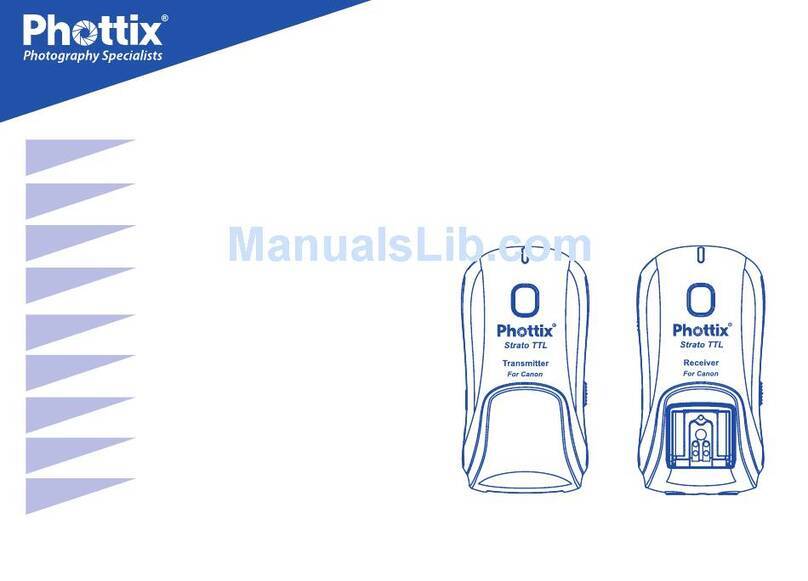
Phottix
Phottix Strato TTL instruction manual
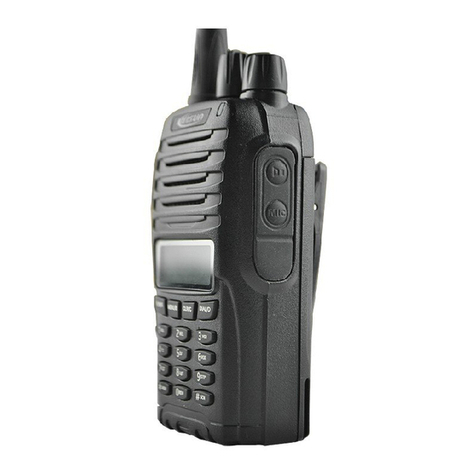
Kirisun
Kirisun PT 3800(1) instruction manual
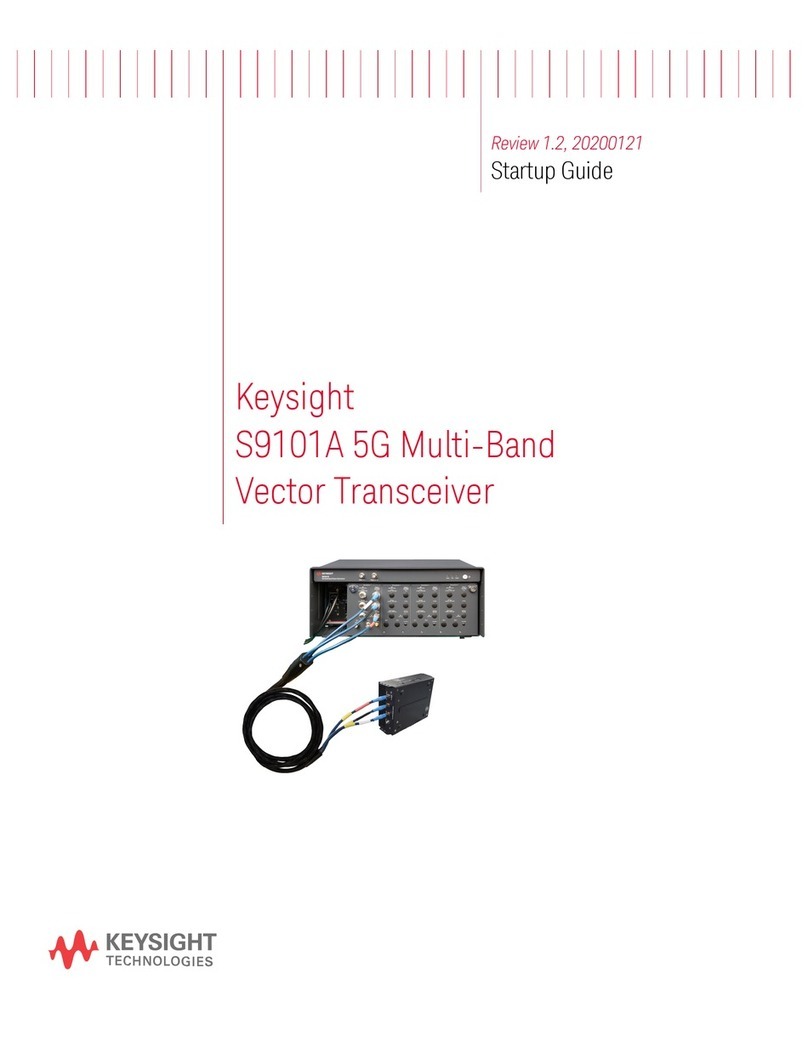
Keysight Technologies
Keysight Technologies S9101A Startup guide
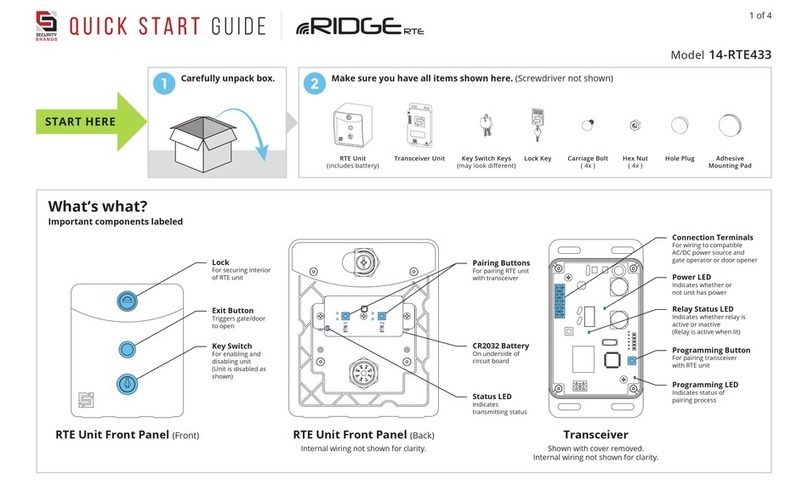
Security Brands
Security Brands RIDGE RTE 14-RTE433 quick start guide
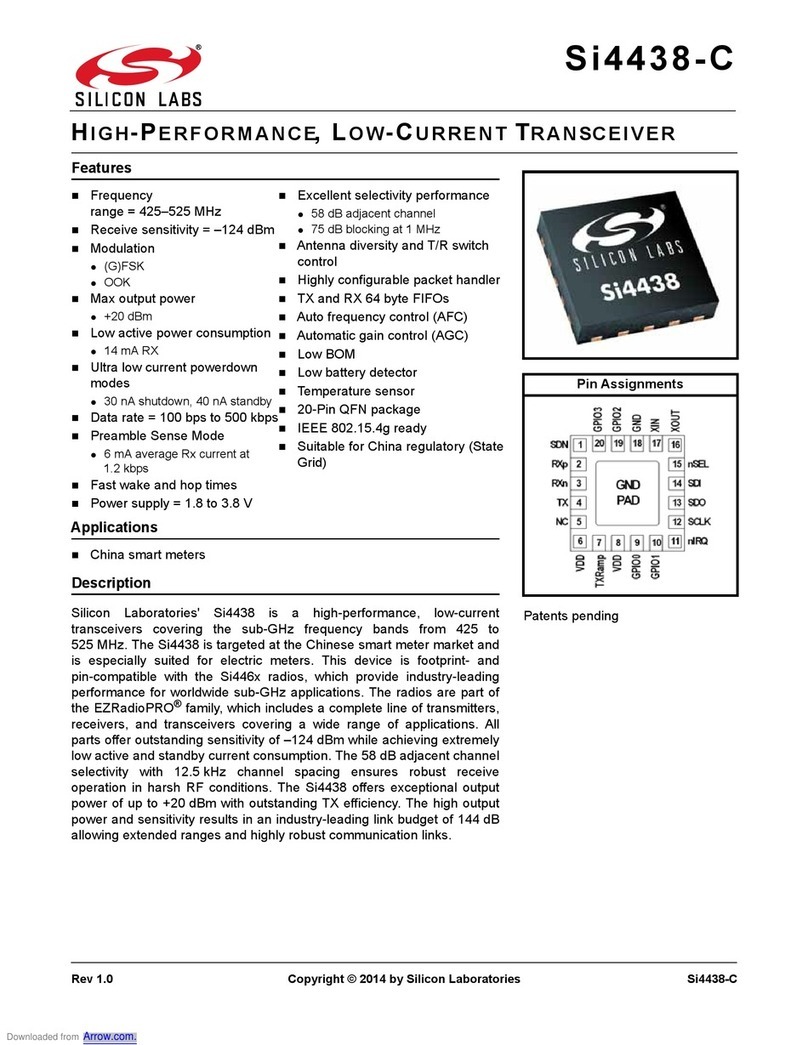
Silicon Laboratories
Silicon Laboratories Si4438-C manual

Yaesu
Yaesu FT-847 Modification
